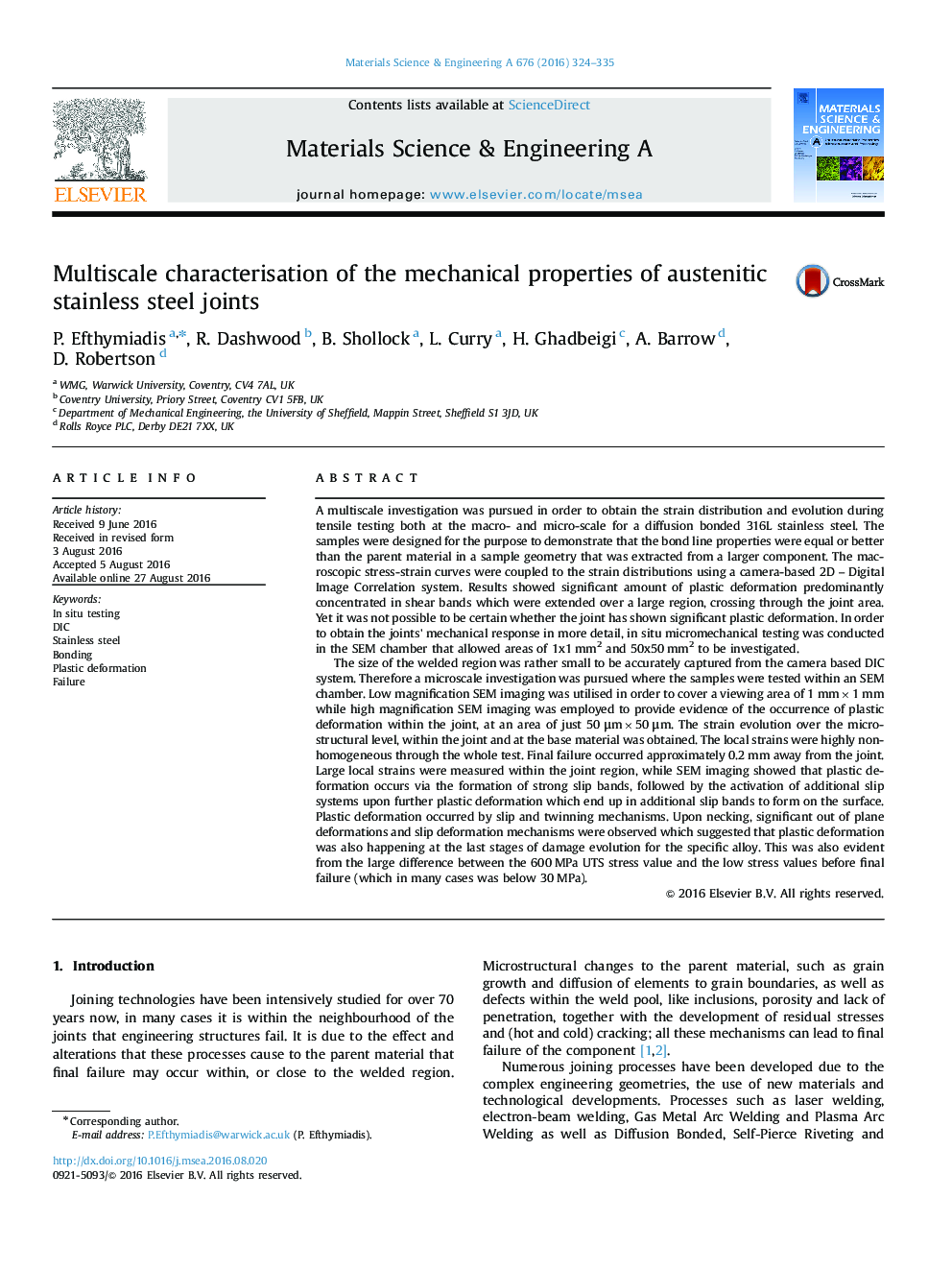| Article ID | Journal | Published Year | Pages | File Type |
|---|---|---|---|---|
| 7974757 | Materials Science and Engineering: A | 2016 | 12 Pages |
Abstract
The size of the welded region was rather small to be accurately captured from the camera based DIC system. Therefore a microscale investigation was pursued where the samples were tested within an SEM chamber. Low magnification SEM imaging was utilised in order to cover a viewing area of 1 mmÃ1 mm while high magnification SEM imaging was employed to provide evidence of the occurrence of plastic deformation within the joint, at an area of just 50 μmÃ50 μm. The strain evolution over the microstructural level, within the joint and at the base material was obtained. The local strains were highly non-homogeneous through the whole test. Final failure occurred approximately 0.2 mm away from the joint. Large local strains were measured within the joint region, while SEM imaging showed that plastic deformation occurs via the formation of strong slip bands, followed by the activation of additional slip systems upon further plastic deformation which end up in additional slip bands to form on the surface. Plastic deformation occurred by slip and twinning mechanisms. Upon necking, significant out of plane deformations and slip deformation mechanisms were observed which suggested that plastic deformation was also happening at the last stages of damage evolution for the specific alloy. This was also evident from the large difference between the 600 MPa UTS stress value and the low stress values before final failure (which in many cases was below 30 MPa).
Related Topics
Physical Sciences and Engineering
Materials Science
Materials Science (General)
Authors
P. Efthymiadis, R. Dashwood, B. Shollock, L. Curry, H. Ghadbeigi, A. Barrow, D. Robertson,
